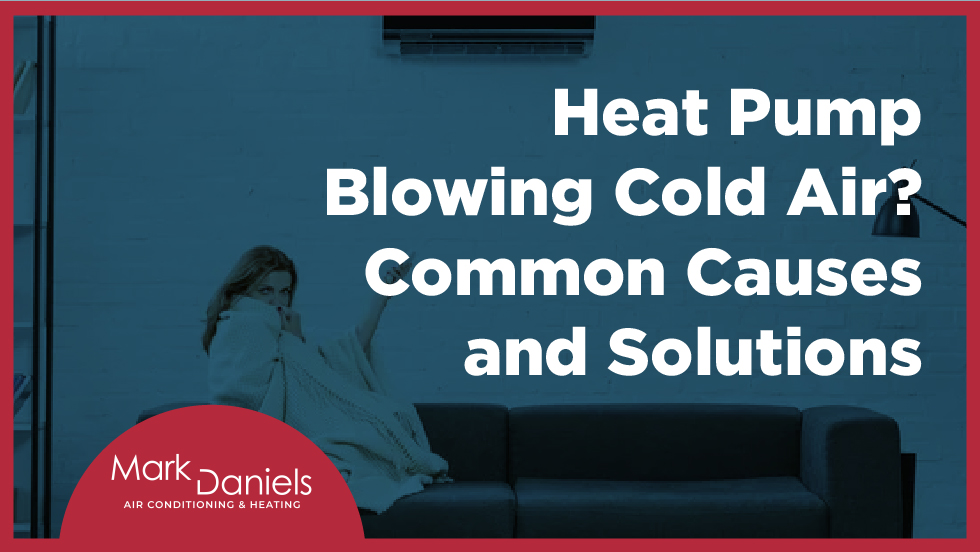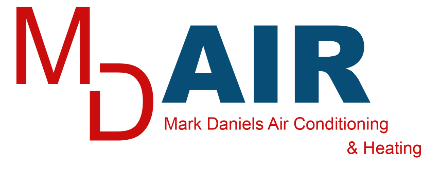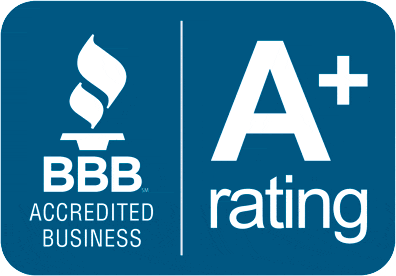Licensed | Bonded | Insured

Heat Pump Blowing Cold Air? Common Causes and Solutions
If you’re fortunate enough to call The Grand Canyon State home, then you know that winter in Phoenix, AZ is mild compared to other parts of the country.
Here, the average seasonal temperatures tend to hover around 44 degrees Fahrenheit at their lowest, staying close to 70 degrees during the day. Of course that is the average, so there are nights when the weather dip below the freezing mark too!
Even though the cold weather may not reach negative temps, it still gets chilly and it’s important you know how to stay warm.
During the winter, you want to make sure that your HVAC system is working correctly.
That’s why it can be a little concerning when you notice your heat pump blowing cold air!
What’s going on and what should you do?
Today, we’re sharing some of the most common culprits, and how our team can help.
The Basics of Heat Pump Operation
Before we dive into troubleshooting, let’s take a quick look at how your heat pump operates.
Unlike a conventional furnace, the pump doesn’t directly heat the air inside of your home.
Instead, it works by absorbing heat from outside air and then transferring it indoors.
During the winter, you may be surprised to find that the refrigerant in your pump can still absorb heat, even as it gets colder outdoors.
In fact, most units can continue to work properly when temperatures get as low as 5 degrees Fahrenheit!
However, most units work at peak capacity when temperatures are at least 40 degrees.
Six Reasons for a Heat Pump Blowing Cold Air
If your heat pump turns on and it’s not blowing hot air, you have every right to be concerned.
As trusted HVAC repair and replacement technicians closely familiar with the Phoenix area, we’ve seen it all.
Here are six of the most common reasons why yours isn’t functioning properly.
1. You’re Used to a Furnace
If you’ve spent a lot of time in a home with a furnace, you may expect your heat pump to deliver the same, robust output.
However, keep in mind that furnaces can get the indoor air much warmer, sometimes up to 120 degrees Fahrenheit or more!
On the other hand, most heat pumps max out at about 85 degrees.
While this is still plenty warm for most homeowners, it might seem a little tepid if you’ve grown accustomed to soaring indoor temperatures when it’s cold out.
2. Your Need to Adjust the Thermostat
Before assuming there’s a technical malfunction at work, start by checking your thermostat settings.
Make sure the fan setting says “Auto” and that the thermostat is set to “Heat”, not “A/C”.
Why does this matter? If your fan is set to “On” and not “Auto” then it will begin to blow air throughout your home immediately, regardless of whether or not the air is warm yet.
Alternatively, setting it to “Auto” means that it won’t start circulating the air until it’s reached your desired temperature.
3. Clogged Outdoor Unit
Without proper maintenance and upkeep, your outdoor HVAC unit can begin to show signs of wear and tear over time.
One of the most common issues is dirt and debris that’s become lodged in the components.
From small grains of sand and dirt to leaves and limbs after a storm, many parts can clog up the system.
If these contaminants build up on the system’s evaporator coil, you’ll feel the difference inside your home.
The more covered the coil becomes, the harder your system has to work to deliver the expected output.
This can cause it to strain so much that it eventually conks out.
Remember to hire an HVAC technician to inspect your outdoor unit regularly to make sure this doesn’t happen.
Most companies will provide regular system tune-ups that allow them to clean off your unit and look for problems that could lead to poor efficiency.
4. Low Refrigerant Levels
Within your heat pump, refrigerant helps move hot air from one set of coils to another.
You need an adequate amount of it to optimize your system’s performance.
If you notice that your indoor air isn’t as warm as it should be, low refrigerant could be to blame.
An HVAC technician can confirm if this is the case and add more refrigerant if necessary.
5. Dirty or Old Air Filters
When was the last time you changed the air filters throughout your home?
Did you know that 82% of Americans fail to perform this simple step once a month?
If your heat pump isn’t working like you think it should then take a look at your filters.
If it’s been a while since you swapped yours out, they might be covered in dirt, dust, and debris.
A clogged air filter is one of the most common problems behind many HVAC malfunctions.
If even one becomes too gunky, it can derail your entire system.
Before it gives out for good, the heat pump might switch from hot to cold air, giving you a warning sign that a full breakdown is on the way.
6. Valve Issue
Your heat pump is comprised of many different parts.
One of those is the reversing valve.
While this piece might be small, it has a very important job: switching the pump from cool to heat mode.
If there’s any kind of issue with this valve, your HVAC system could remain stuck in cooling mode.
While it might seem like something you can check and replace on your own, we always recommend hiring a qualified and experienced technician to perform this job.
Keep Your Heat Pump Up and Running
Even in Phoenix’s relatively pleasant winters, where temperatures rarely dip below freezing, you deserve to stay warm and cozy inside your home.
If you discover your heat pump blowing cold air, it’s time to schedule a maintenance visit with our team!
There are a range of issues that could cause this problem, from low refrigerant levels to dirty air filters and incorrect thermostat settings.
At Mark Daniels Air Conditioning and Heating, we’re here to keep you comfortable all year long.
From new HVAC installations to emergency repairs and replacements, we do it all.
Complete our online form to request a service now!
Considering Sun Lakes HVAC company for your indoor air needs? Our team at Mark Daniels Air Conditioning & Heating offers expert maintenance and tailored insight to your HVAC needs. Call (480) 571-7219 or request service online now!



